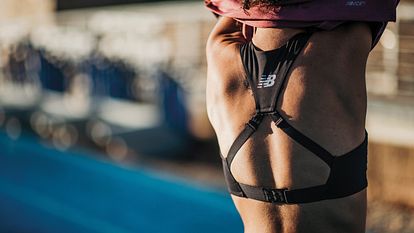The differences between the Brooks Glycerin 16 and the Brooks Glycerin 17 are subtle, and they don’t change the overall fit or feel of the shoe from the outgoing model to the new one.
Brooks made the changes to the shoe’s upper. The 16 used a wide midfoot overlay anchored by three lace holes to secure a runner’s foot, but the 17 did away with the overlay, opting instead for a printed design over the mesh.
Inside, Brooks added the OrthoLite sockliner to the 17 for increased comfort.
The engineered mesh is almost the same as before, though. Brooks rearranged the pattern of the openings in the mesh, but it didn’t affect how the upper moves or feels.
While updating the upper, Brooks kept the spotlight on the bed of cushy DNA Loft foam underneath the Glycerin 17. Like last year’s shoe, the foam midsole runs the length of the shoe for a continuously soft feel as you transition from heel to toe, and the design on the midsole is identical between models, too.
Underneath all that foam, designers used the same outsole for grip and durability. Brooks notched the outsole with seven grooves to let the Glycerin 17 flex naturally as you power off your toe, and the heel employs the same segmented crash pad to soften your landings.
Conclusion
The Brooks Glycerin 17 is a plush everyday training shoe that’s full of the softest DNA Loft foam. We loved how soft it felt on pavement and how it never left us feeling like we were stuck in sand.
This is an update that we were happy to run in mile after mile after mile.
Still not convinced? Don’t sweat it. Fleet Feet's return policy means you can test drive your shoes and gear without risk. If you’re not happy with the way your gear performs, looks or fits, we’ll take it back within 60 days. Plus, you’ll get free return shipping on all fleetfeet.com orders. That's our Happy Fit Guarantee.
By Evan Matsumoto. Evan played many sports growing up but didn’t go pro in any of them. Now, he’s the digital copywriter for fleetfeet.com and editor for the Fleet Feet blog where he writes about different foam densities and engineered mesh uppers.






Join our Newsletter
Get deals, events, and more.
Connect with Fleet Feet
Get involved on social media.
Find a Location
Fleet Feet has over 250 locations nationwide!
Find a Store